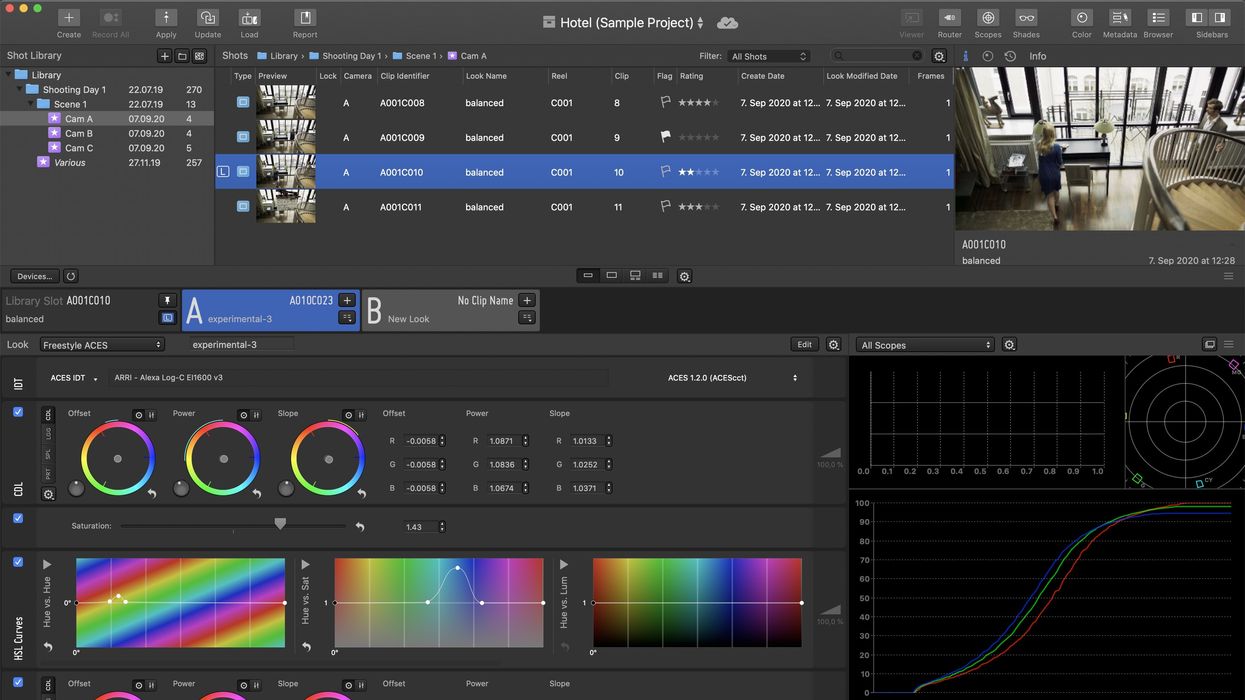Quickly Deliver Your Data to Post with ShotHub
Pomfort is one of the leading providers of on-set color management software, and they are making the link to the post suite faster and easier with the cloud-based ShotHub.

Pomfort offers two of the most popular pieces of software for DIT's: Silverstack, for managing camera backups and metadata, and Livegrade, for live grading footage on set. They are now launching ShotHub, an online tool designed to help ensure that that data makes it successfully into post production as quickly as possible, and stays accessible for as long as it's needed.
This is such a needed platform that it's a surprise that it has taken this long to be created. While the DIT is not likely doing the full dailies grade (that job is up to the dailies colorists), they are on set with the DP and director and frequently do rough grades to explore how things might look, and help the DP refine lighting within a given look. That data gets passed along to post, of course, but today it most often travels to set as files saved alongside the dailies files.
Those files can get lost any number of ways. The junior assistant ingesting dailies might not know to copy those metadata files along with the raw footage. The filename might not make it easy to track what footage it should stay with. It's yet another possible error point to be avoided.

ShotHub simplifies that by integrating with LiveGrade and Silverstack on set live and through the cloud to back up that shot data and pass it along to the post house automatically.
It archives all the data, so the post team has access to it both immediately as well as months later, in case someone needs to regrade a shot or VFX needs to match the dailies look. It can pass data both ways, so if the dailies colorist does a grade in the post house, it can automatically pass back to set where the DIT can apply it to the current day's shooting.

While managing color might seem high-end and out of reach of most indie and small budget productions, it's vital to ensure that you are doing everything you can to ensure the highest quality and most accurate images are being monitored by key decision makers.
You don't want a producer or a commercial client loosing faith in your team because the dailies, and thus the rough edits, don't look anything like what was envisioned or promised. ShotHub can be a valuable tool in keeping that information flowing between set and post more fluidly, and keeping that information around for when you need it.
Check out the Pomfort site for more info.
Source: Pomfort











